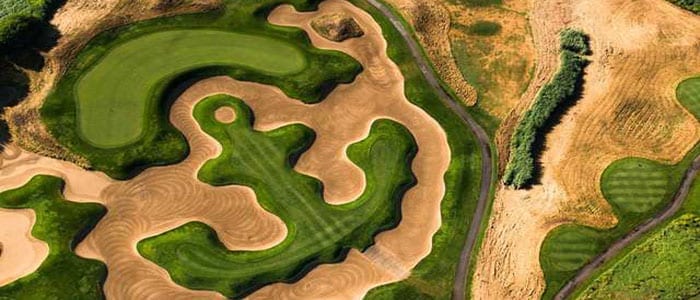
Your mom and dad always told you “It’s easier to get into something than to get out of it”. Immediately, three things come to mind to confirm this parental warning — trouble, debt, and prison. These three situations enable lawyers, CEO’s of credit card companies, and bail bondsmen the opportunity to earn a comfortable living.
Beyond these, there are contracts, marriages, and leases. Ever try to weasel out of your cable TV or wireless contract? Or, worse, ever try breaking your time-share contract? Pre-nupt agreements can be helpful, but divorces always seem to get costly. If, after signing an apartment lease, you discover obnoxious neighbors, low-flying aircraft, or nightly train horns, too bad for you; these are just ‘rub of the green’ in small claims court.
In golf, there is also something that’s easier to get into than to get out of, and — you guessed it — a sandtrap. Golf traditionalists still refer to them as ‘bunkers’. “Ye shuldna hit in thar” one of the original golfing shepherds said to his partner who first encountered a sandy wasteland and struggled to hit out of it. And eons later the same advice ought to be given to 21st century golfers. Pros are fearless when faced with an upcoming bunker shot. Amateurs, on the other hand, experience sweaty palms, rising blood pressure, and increased heartbeat when they discover that their ball has ended up ‘on the beach’.
The Evolution of Bunkers
Bunkers have evolved from being just small ovals or circles of sand next to a green; cruelties in the minds of golf course architects have not only increased the area of bunkers but their depth as well. Furthermore, course designers have embellished their sandy hazards with the likes of walls of stacked sod, railroad ties, wire grass plants, grass islands, even trees. Visually, an element of fear can be introduced when golfers see a bunker that has stairs or steps leading down to the sand level.
A number of difficult bunkers are so world famous (infamous) that they have been named. For example: Principal’s Nose; Hell Bunker; Road Bunker; Church Pews; Coffin; Kitchen; Grave; Hell’s Half Acre; and, The Devil’s (unmentionable). Attempting to name all the bunkers at Whistling Straits would be tedious task. This layout in Kohler, Wisconsin has the most bunkers of any course in the world; golf architect editor for Golf Digest, Ron Whitten has counted 1,012 there. Conversely, our research at Chicago Golf Report has discovered that the only course in the seven county Chicago-metro area without any bunkers is Meadowlark Golf Course in Hinsdale.
But, before revealing our list of the top ten toughest bunkers on Chicago’s public courses, here is an acknowledgement to handful of skeptics, contrarians, and Mythbusters’ fans who would challenge the “easier in than out rule”. Yes, there are two known exceptions. First, it is easier getting out of a parallel parking space than getting into it. And the second exception is the freshman class of an Ivy League school.
Our Top Ten Bunkers
With consideration given such factors as escape difficulty, area and depth, likelihood of capturing an incoming shot, and additional trouble near said bunker, here is our list of the top ten most troublesome bunkers on Chicago area public courses (with apologies if your personal nemesis is omitted):
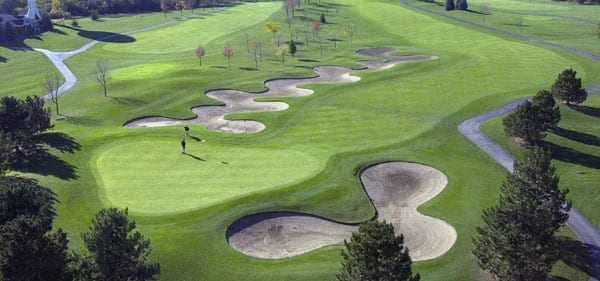
Steeplechase 14th
#10: Steeplechase Golf Club-Hole #14:
What may appear to be an easy or average, 550 yard, par-5 hole can literally turn into a big problem at the dogleg. A bunker shaped like a giant snake or sea serpent troubles golfers for the final 110 yards down the right side. Stay left, way left, to avoid this creature, or, if you are snake-bitten and end up in this trap, it may be best to just take your medicine and exit left to safety rather than trying to shoot directly toward the green.
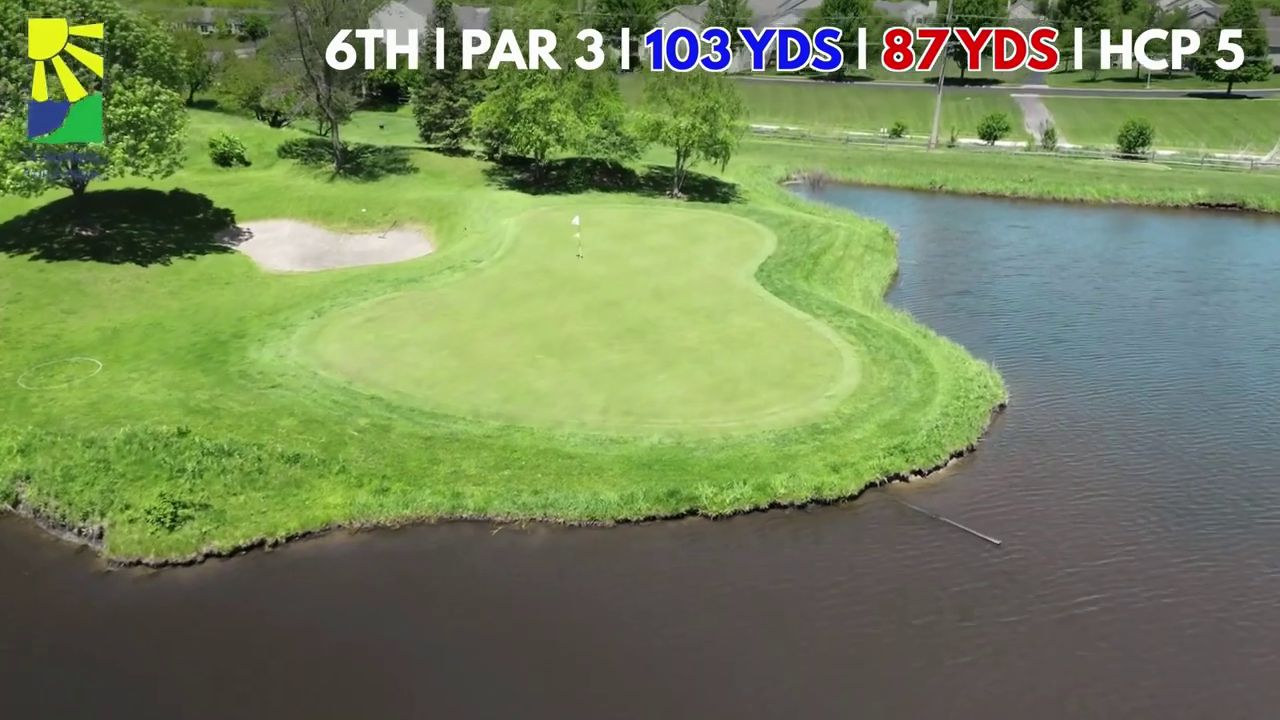
Grayslake 6th Hole
#9: Grayslake Golf Course-Hole #6:
Kurt Russell starred in the 1986 film, “Big Trouble in Little China.” This film’s title is an apt phrase to describe the problems caused by this bunker left of the green on the par-3, 103-yard hole. The green is a peninsula with water front, right, and back; shots finishing left of the green are quite likely to find this bunker. The bunker is positioned at the bottom of a hill, but because of its non-symmetrical shape, the lies obtained in it, strangely, are often downhill. Measured left to right, this green is narrow, so missing left and being bunkered, the golfer’s next shot faces the high possibility of scooting across the green and into the pond.
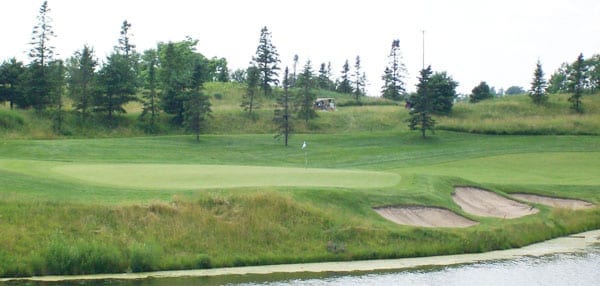
Glen Club 11th
#8: The Glen Club-Hole #11:
Three unfriendly bunkers guard the left side of this ornery par-3 hole. Of these three ‘non-amigos’ the one furthest from the tee and farthest left is the most difficult. Because of its depth, a highly elevated explosion shot is necessary to clear this bunker’s top lip and grassy shelf.
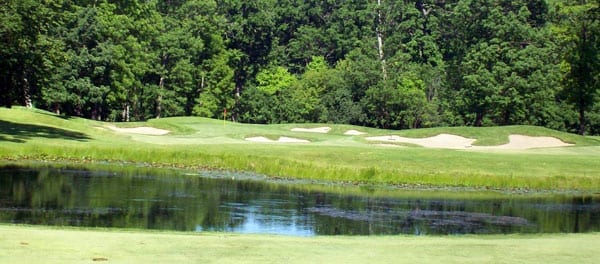
Cantigny Woodside 3rd
#7 Cantigny Golf-Woodside-Hole #3:
Lengths of 179 / 200 / 227 yards from the various sets of men’s tees already make for a challenging par-3 hole; additionally, the hole plays slightly uphill and there is a pond to carry just in front of the tee, and moreover, trees border the left and right sides and back of the green. With thoughts like ‘just get it over the pond’ or ‘don’t go over the green’, the deep “X” shaped bunker in front of the green collects an inordinate amount of shots from golfers who have these negative thoughts. Chunked shots from this bunker are likely to find another heart-shaped bunker closer to the green. Regular golfers at Cantigny Woodside feel that there is an unwritten local rule that says that at least one ball from each group must be played from this bunker.
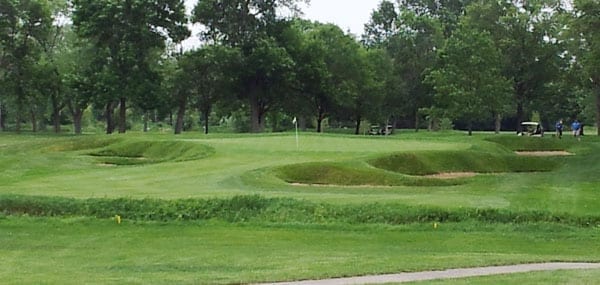
Ravisloe 15th
#6: Ravisloe Country Club-Hole #15:
Just the thought of knowing that the course was renovated by Donald Ross (recently enhanced by David Esler keeping Ross’ principles) means that there will be green complexes that seriously challenge golfers. This short hole typifies the problems that face golfers after they fail to put their tee shot in the proper anti-Ross position. There are six chances to find sand on this uphill par-3. Of the six, the back right bunker is an especially brutal challenge as it leaves little room to land a shot on a green that slopes dramatically from back to front. Saving par versus Mr. Ross is indeed a victory.
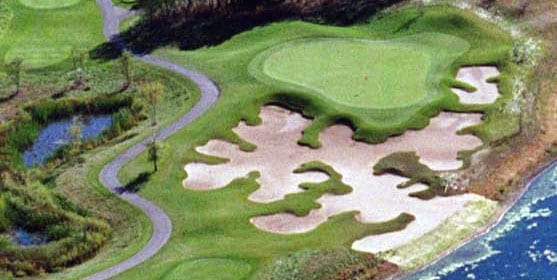
Foxford Hills 13th
#5: Foxford Hills-Hole #13:
Another short par-3 hole that can be a score wrecker because of a bunker. The irregular shape of this trap will cause the regular litany of sandy problems. If your shot ends up in a truly unfavorable location in this bunker you may want to consider a “stroke and distance” penalty option and re-tee. Hole #13 can prove to be very unlucky if your shot misses the green.
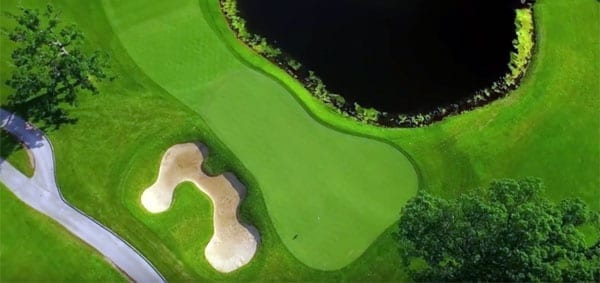
Cog Hill Dubsdread 18th
#4: Cog Hill-Dubsdread-Hole #18:
The greenside bunker on the finishing hole can finish your dreams of a good score at the famous Lemont course. The area to the right of this narrow green is highly elevated, while the area to the left is deeply depressed; high road right: sand; low road left: pond. Arriving in this bunker, many balls can be pressed up against the ‘back’ (extreme right) of the bunker. Amateurs and touring pros, alike, will be challenged with an extremely difficult downhill bunker shot, where keeping the ball safely on the green is a ‘win’ by itself. Still, if the hole location is on the right side of the green, a lengthy uphill putt will be next. Recall the 72nd hole of the 1994 Motorola Western Open. Greg Kraft was in this bunker; he blasted out and kept his ball on the green but faced a 25-foot uphill putt, which he failed to make. With this bogey, Kraft finished one stroke behind tournament champion, Nick Price. A troublesome bunker that Kraft will long remember.
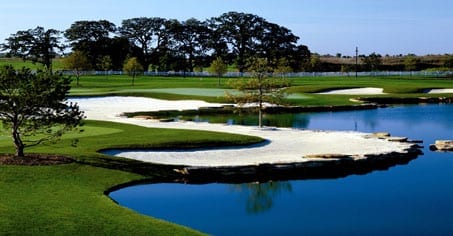
Whisper Creek 15th
#3: Whisper Creek-Hole #15:
Its “S” shape begins the spelling of the best advice to conquer this hazard — STAY AWAY. After safely traveling the first 400+ yards of this difficult par-5 hole, if a shot just trickles into the front end of this bunker, the upcoming shot faces 112 yards of airborne travel over first sand, grassy rough, second sand, water, and third sand. A tree growing in the sand may even hinder the direct route to the pin. The challenging design of this risk-reward hole, places the “S”-shaped super bunker in both the risky path to the green and also the safety path to the green.
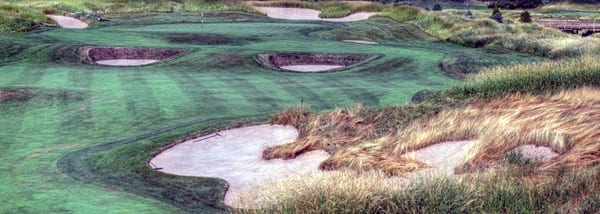
Mistwood 2nd
#2: Mistwood-Hole #2: “Wee Pots”.
The namesakes of this challenging par-4 are the deep-stacked sod bunkers that guard the middle of the fairway about 50 yards from the green. The depth of these bunkers makes finding the green with a long-range bunker shot highly improbable. The sides, as well as the front, of the pair of “wee pots” are walls of stacked sod, therefore both frontal and sideways escapes may be impossible, meaning you’ll have to play out back towards the tee.
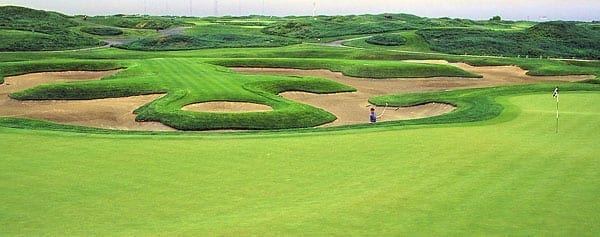
Harborside Port 15th
#1: Harborside International Golf Center-Port Course-Hole #15:
“Picturesque…photogenic…nasty”.Here are three adjectives that describe our top choice for Chicago’s most troublesome bunker. A par-3 that requires a mid-iron or more to reach the green; the area from the tee to the kidney-shaped green is a huge bunker with a grassy anchor aesthetically placed in the middle. Your chances for par will sink like an anchor should you place your tee shot in this bunker. Anchors aweigh!





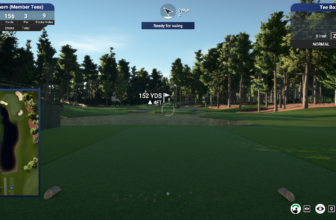
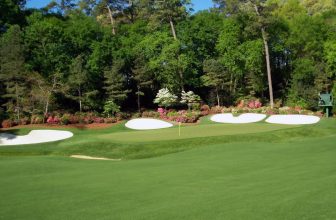

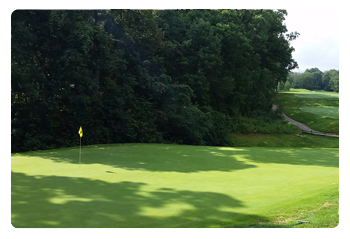 Find a Golf Course
Find a Golf Course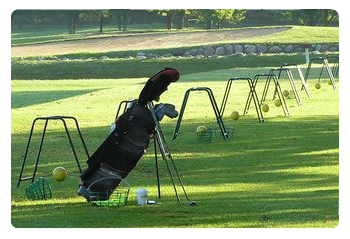 Find a Driving Range
Find a Driving Range Find a Topgolf
Find a Topgolf Find a Golf Instructor
Find a Golf Instructor